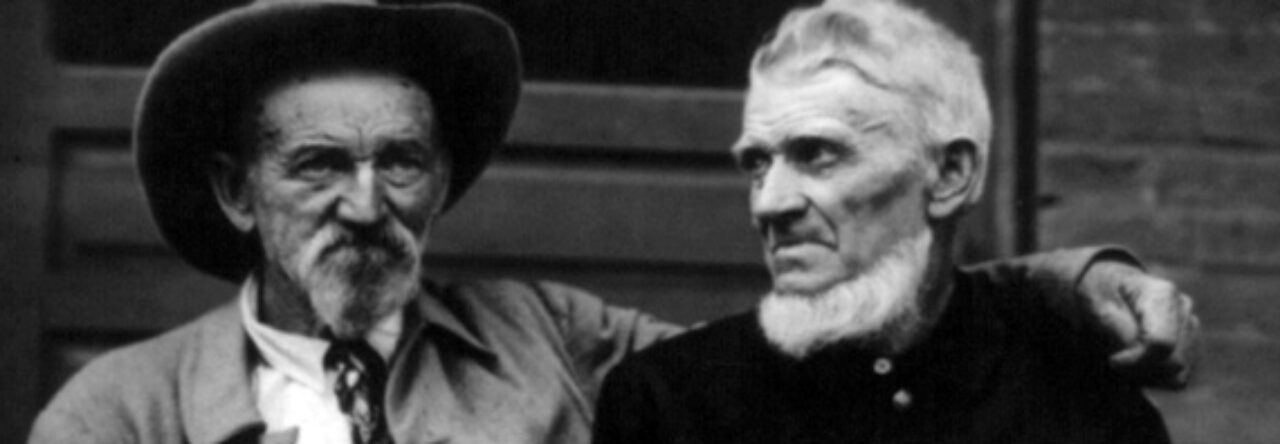Narrative
Though his family connections alone guaranteed a bright legal future, the young Moncure Conway was an indifferent law student. Despite the urging of his numerous cousins to take up his place as an active defender of the South, he was already having significant problems justifying his beloved Virginia’s maintenance of slavery. Despite this, he served in 1850 as the secretary of the Southern Rights Association in Warrenton, and seemed in his momentary embracing of the recently published racial theories of Louis Agassiz to be searching for any justification for human bondage. Despairing of the law, he pleased his parents at last when on his nineteenth birthday he became a Methodist circuit rider preacher, assigned to the Rockville, Maryland area. During the next three years he rode northern Maryland, literally expanding contacts with the world, which included an influential friendship with a family of Quakers. Most importantly he indulged in the obsessive reading that was to adjust both his ideas about religion and slavery. Under the influence of writers such Ralph Waldo Emerson, he left the Methodist circuit in February, 1853, went north to Boston and enrolled in the Unitarian dominated Harvard Divinity School. While there he met and befriended Emerson and Thoreau and settled his mind against slavery. He was still a southerner, however, and became involved in the famous case of Anthony Burns, a recaptured slave being returned from Boston to Virginia under the new and hated federal Fugitive Slave Law. He refused publicly to rally in support of the action with other southern students but also declined in private to aid abolitionist friends in accosting Burn’s Virginia slave owner — whom he knew slightly from earlier days in Fredericksburg — thereby offending both sides.
He graduated from Harvard Divinity and took up a post as minister of the First Unitarian Church of Washington D.C. in late October 1854. All his time in the capital did, however, was to convince him that war over the sectional question was inevitable. In January 1856, he gave his solution for the avoidance of such a violent outcome. He preached from his pulpit the minority opinion that disunion was preferable to civil war and that an independent South would be left to work out emancipation through the moral example of the free labor North. This pleased few members of his congregation on either side of the question and as the sermon gained in national notoriety he was dismissed the following October. He was soon in the pulpit again, however, this time in Cincinnati, Ohio. A far more liberal membership welcomed him and his anti-slavery work there and he continued his development in both study and writing. He also met and married Ellen Dana in June 1856, beginning a sustaining and enduring partnership that was to last almost forty years.
Life & Family
Moncure Conway was related to the Washingtons, the Madisons, and the Lees. His uncle on his mother’s side sat as an Associate Justice of the United States Supreme Court. Both his father, Walker Peyton Conway, a prominent slaveholding landowner and his mother, Margaret Daniel Conway, had converted after their marriage to Methodism and the Conway children were exposed at an early age to disciplined evangelicalism. Moncure Conway first was schooled at home then attended the thriving Fredericksburg Classical and Mathematical Academy, a school that had educated Washington and other famous Virginians. He then followed his brother Peyton to Dickinson College in Carlisle, Pennsylvania as a fifteen-year-old sophomore. The Methodist affiliated institution cemented his faith and he fell somewhat under the influence of professors George Crooks and John McClintock. He did not share the latter’s fierce abolitionism and almost left the college when McClintock was involved in a notorious riot in the town that freed recaptured slaves and resulted in the death of a slave catcher. He graduated with the class of 1849 and returned home to Virginia to study law with a family friend in Warrenton.
Sources
The Dickinson College Archives and Special Collections contains a large collection of Conway’s papers and books. Some of this material is available online at Their Own Words, including his Personal Journal (1851-53), Testimonies Concerning Slavery (1864),
Republican Superstitions as Illustrated in the Political History of America (1872), and Autobiography, Memories and Experiences of Moncure Daniel Conway (1904). Not all of the correspondence in the Conway collection at Dickinson has been digitized. Other material in the collection includes Conway’s letters and some of his descendants (several letters are from 1940s and 1950s). This finding aid has details on the material in the collection. Key secondary sources include Helen Gallaher, Moncure Daniel Conway: Author and Preacher, 1832-1907: A Bibliography (1938), John D’Entremont’s Southern Emancipator: Moncure Conway, The American Years 1832-1865 (1987), and Jonathan Earle’s “The Making of the North’s ‘Stark Mad Abolitionists’: Anti-Slavery Conversion in the United States, 1824-54,” Slavery & Abolition 25 (2004): 59-75.
Places to Visit
You can visit the Dickinson College Archives and Special Collections in Carlisle, Pennsylvania and the Moncure Conway House in Falmouth, Virginia.
Artifacts
Several items are at Dickinson College Archives, including a cover of a French game that Conway gave to his daughter, Mildred. This finding aid details the other material in the collection.
Images
A number of photographs are on Conway’s House Divided profile. As for this family picture from 1877, the people who are in it are identified on the back side. In addition, the Moncure Conway Foundation has a 1862 Carte De Visite of Eliza and Dunmore Gwinn, who had been slaves owned by Conway’s family in in Falmouth, Virginia but had escaped in 1861.


Leave a Reply